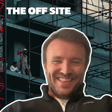
How Engineers Can Use AI Right Now: Five Workflows Worth Trying!
Join Jason and Carlos as they unpack another three topics from the world of construction:
🚂 Canada's High-Speed Rail Ambitions: Deep dive into the proposed Toronto-Quebec City connection, examining how the project shifted from high-frequency to high-speed designation, the staggering $50-100 billion price tag, and why a journey that was faster in 1970 now needs such massive investment.
🤖 Practical AI Applications in Construction: Live demonstrations of five game-changing AI implementations anyone can use today - from automating concrete pour analysis and cost tracking to streamlining subcontractor pricing negotiations, and building an automated early warning system using site WhatsApp messages.
😊 Construction Happiness Insights: Analysis of the first Construction Happiness Barometer survey of 300 professionals, revealing why colleague relationships trump salary for job satisfaction, and what this means for project leadership and team retention.
Key Timestamps:
00:00 - Introduction
06:02 - Canadian High-Speed Rail Project
12:07 - AI Uses In Construction Right Now
37:32 - Construction Happiness Barometer
Check out the Off Site newsletter here
Follow The Offsite Podcast for weekly insights into the biggest stories in construction and infrastructure.



















